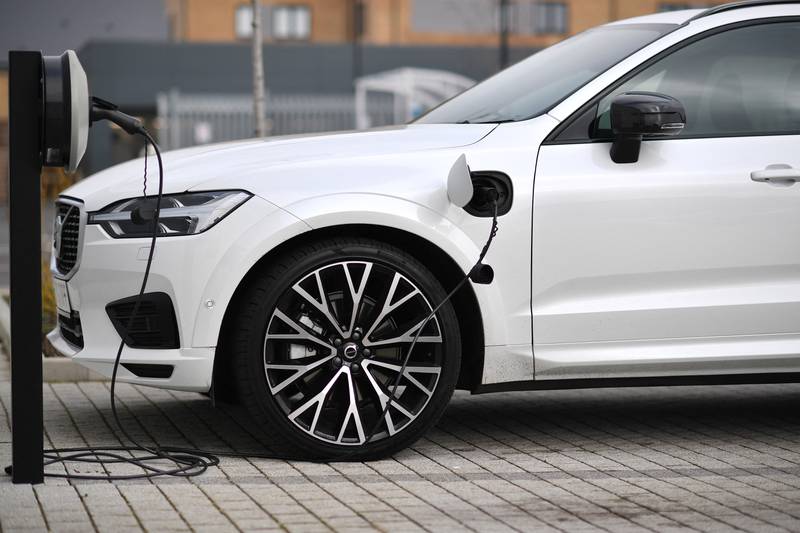Europe set to be global leader for electric vehicle use by 2030, report says
09 January, 2023

Europe is forecast to overtake China and have the highest rate of electric vehicle use in the world by 2030, according to a report.
The region is forecast to have a 67.3 per cent penetration rate — up from 22 per cent in 2023 — for new energy vehicles, the Citi State of Global Electric Vehicle Adoption report said.
This places it ahead of China (66.6 per cent), South Korea (60.5 per cent) and the US (45.8 per cent), while the Middle East and Africa are forecast to have a penetration rate of only 2.7 per cent.
In October 2022, an agreement was reached by the European Parliament and European Council ensuring all new cars and vans registered in Europe will be zero-emission by 2035.
“Reaching zero emissions by 2035 raises questions around the long-term relevance of hybrid technology in Europe and implies an outright ban on combustion engine technology within 15 years,” the report said.
“While OEMs [original equipment manufacturers] viewed electrification as just a tool to meet CO2 targets a couple of years ago, it has now become an integral part of many of their strategies. The uptake from end consumers has also been encouraging as evidenced in the strong BEV [battery electric vehicle] sales outperformance since 2020.”
The growth in popularity of electric vehicles was shown in the UK in the past year, as battery electric new cars took a market share of about 17 per cent in 2022, overtaking diesel for the first time to become the second most popular system after petrol, data released by the Society of Motor Manufacturers and Traders shows. December saw battery electric vehicles claim their largest ever monthly market share of 33 per cent, driven by a large number of Tesla cars being delivered.
Sales of new petrol and diesel cars and vans in the UK will be banned from 2030.
Last year was regarded as a “good year” for electric vehicle adoption in the US, the Citi report said, with new vehicle sales penetration growing throughout the year to more than 5 per cent of total light vehicle sales.
The rise in EV adoption came despite significant price increases implemented by car makers to offset input costs, however two-thirds of total EV sales came from just eight US states.
The Citi report said there could be a sudden rise in demand on the way.
“Though US EV penetration continues to lag other geographies, we continue to believe that the structure of the US auto market lends itself well for a potential sharp and sudden inflection in EV demand,” the report said.
“This is because vehicle density in the US — the ratio of vehicles per household — ranks highest in the world at greater than 2x, with around 285 million light vehicles on the road.
“EVs have gained in popularity not only for being electric, but also for containing state-of-the-art connectivity and over-the-air software updates often with next-generation advanced driver assistance systems features. As the supply of available EVs grows and as EV charging infrastructure continues to expand, it is conceivable that an increasing number of US households will rapidly decide to migrate to a one internal combustion engine and one EV household — essentially retaining the best of both worlds.”
The economic downturn could, however, provide a “shock” to EV adoption in the US.
EV sales in California account for 35 per cent of the US total, and they could be susceptible to the technology industry layoffs which have been prevalent in recent months, especially with demand supported by a greater mix of younger buyers.
EV adoption in the latter part of the decade will depend on newer battery technologies and the ability to launch high volume EVs at mass market prices, the Citi report added.
Meanwhile, in China, the adoption of new energy vehicles is being driven by consumer appetite for the technology, strong product cycles and government incentives.
Growth in EV users will be aided by a sharp rise in the number of models available to buyers, and particularly at a lower price point.
“Across the price stack, we expect the number of distinct NEVs [new energy vehicles] available for sale to increase from 235 models in 2022 to 399 models in 2025,” the Citi report said.
“On average, we expect 70 per cent of NEVs to transact at prices below RMB200,000 ($28,700) and only 5 per cent-7 per cent of NEVs to transact at prices above RMB300,000 ($43,000), during that forecast horizon.”
The report comes as Tesla, the world's biggest electric car company, announced another record for annual deliveries as it shipped 1.31 million cars in 2022, up more than 40 per cent year on year.
However, Tesla's deliveries missed Wall Street estimates and even the company's own growth projection of 50 per cent, despite opening two new factories last year.
Source: www.thenationalnews.com
